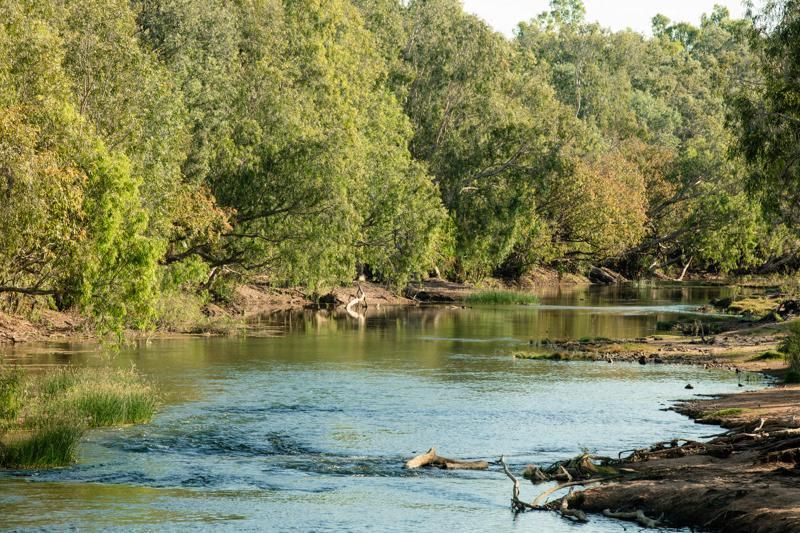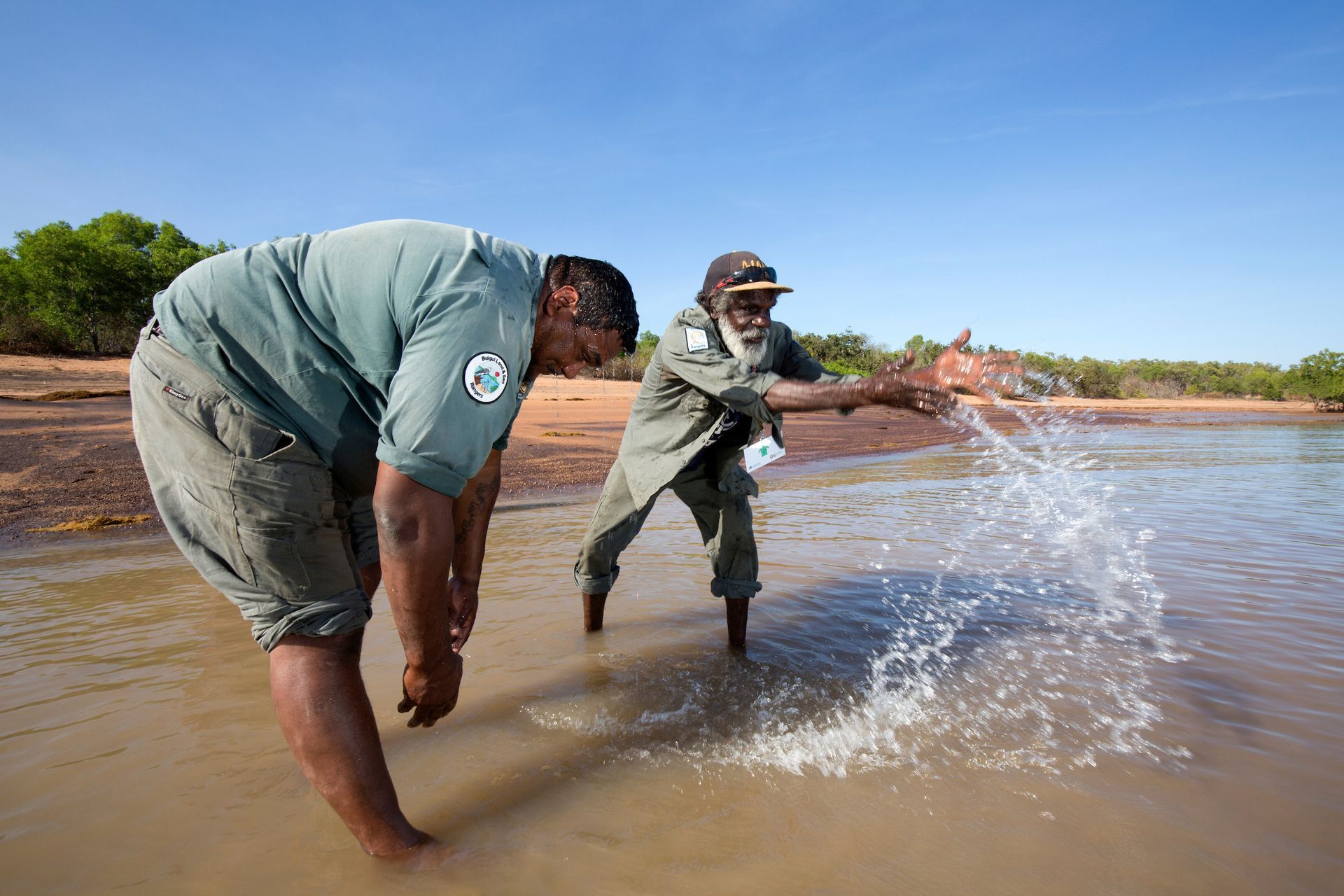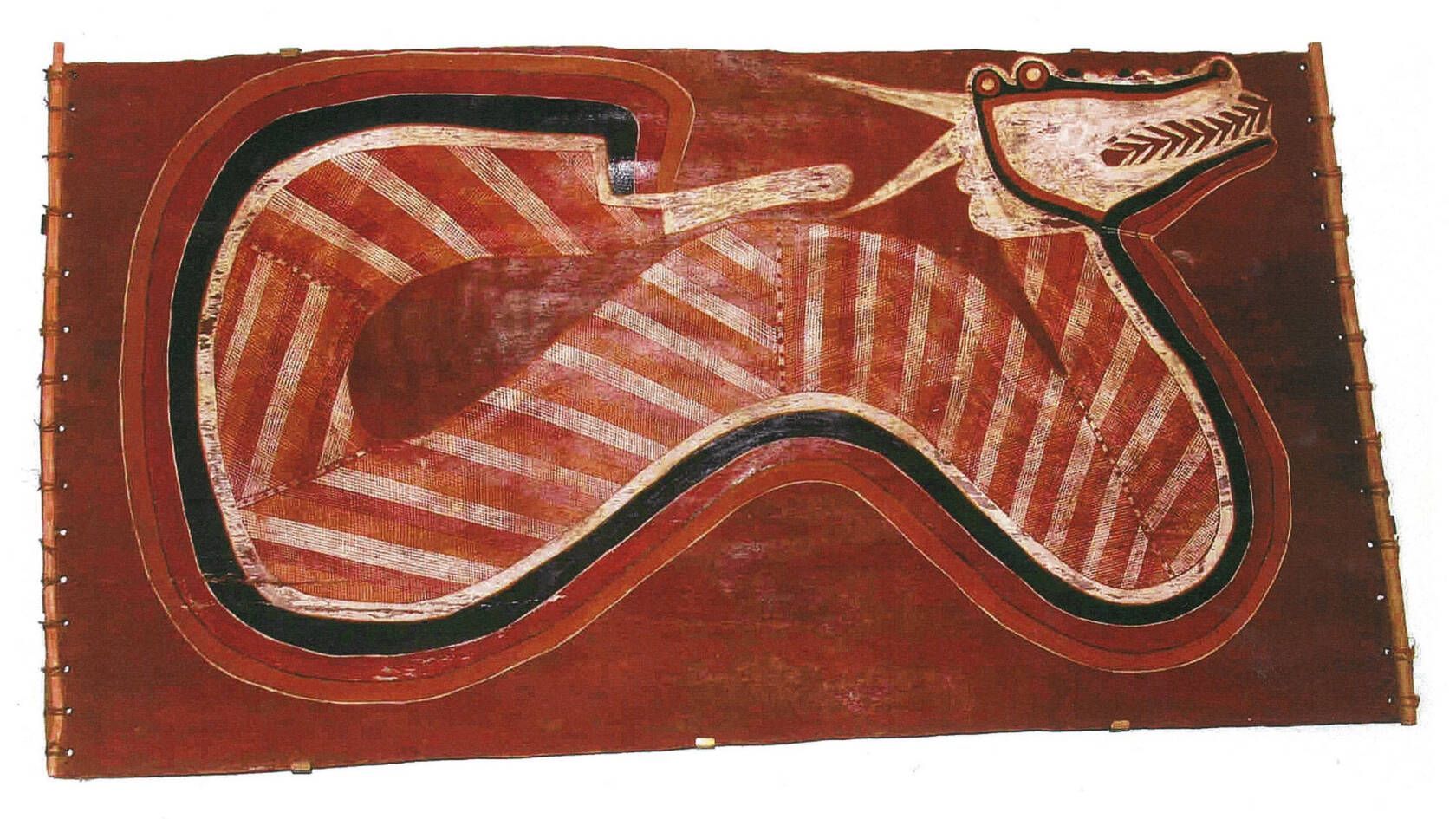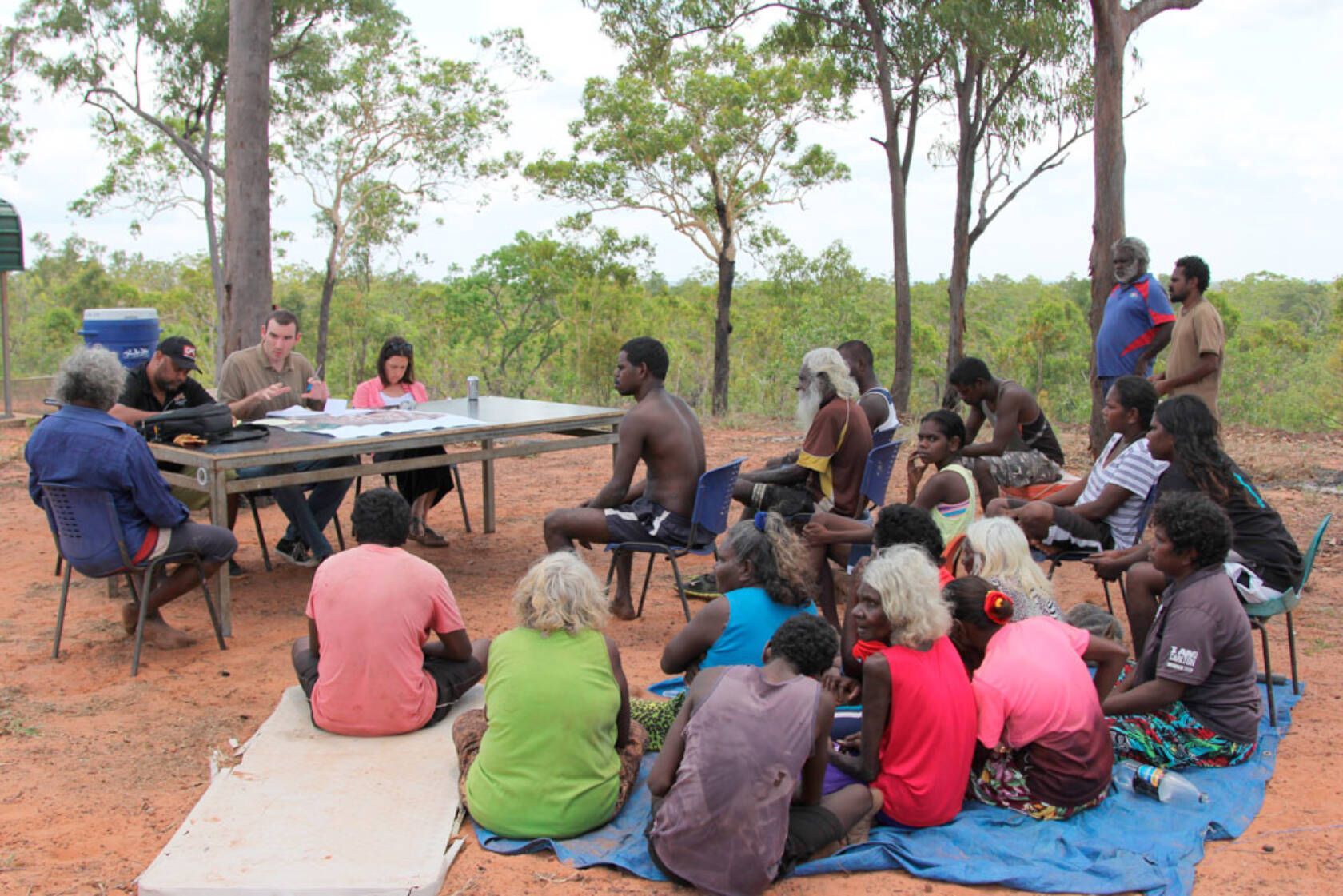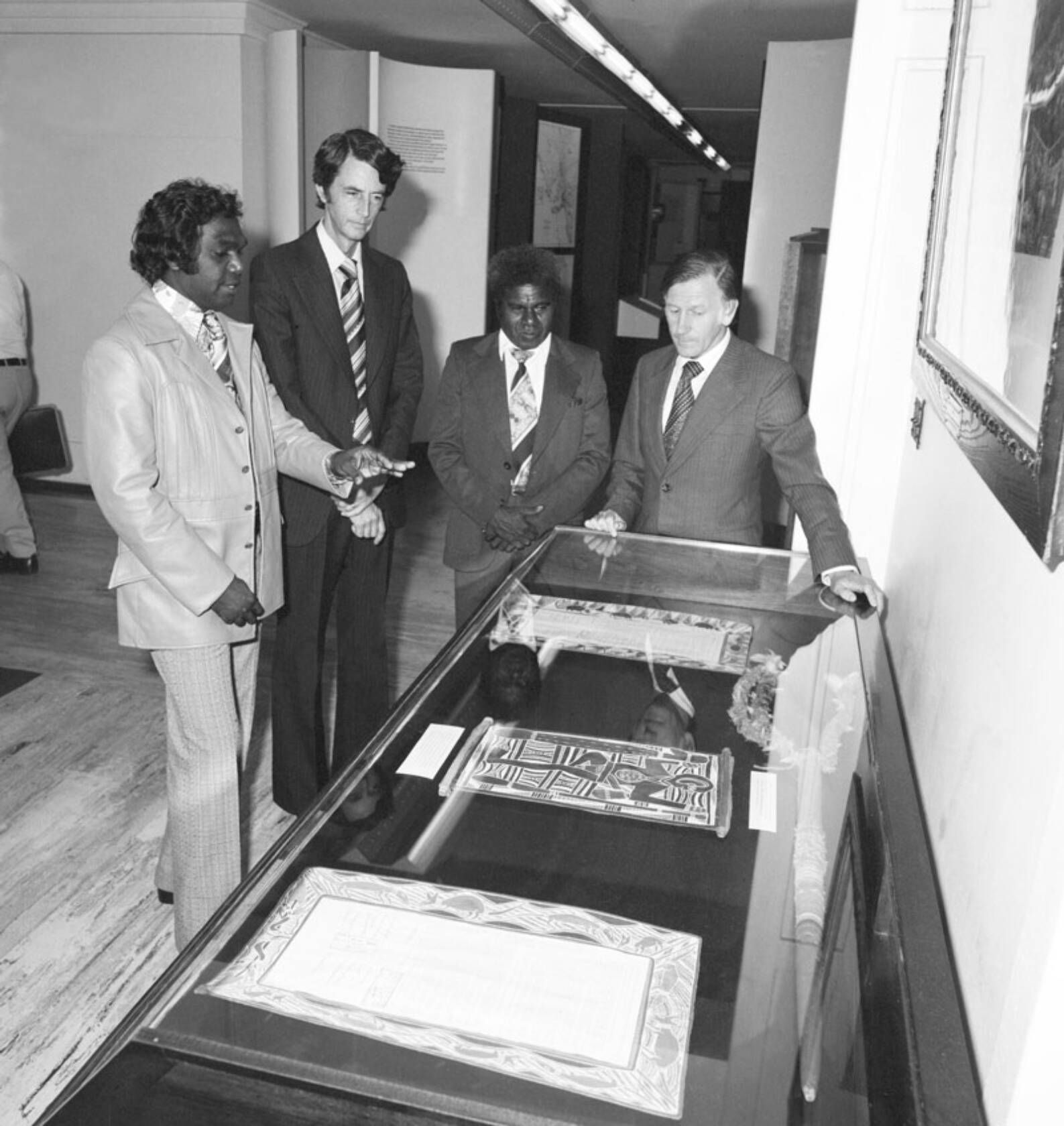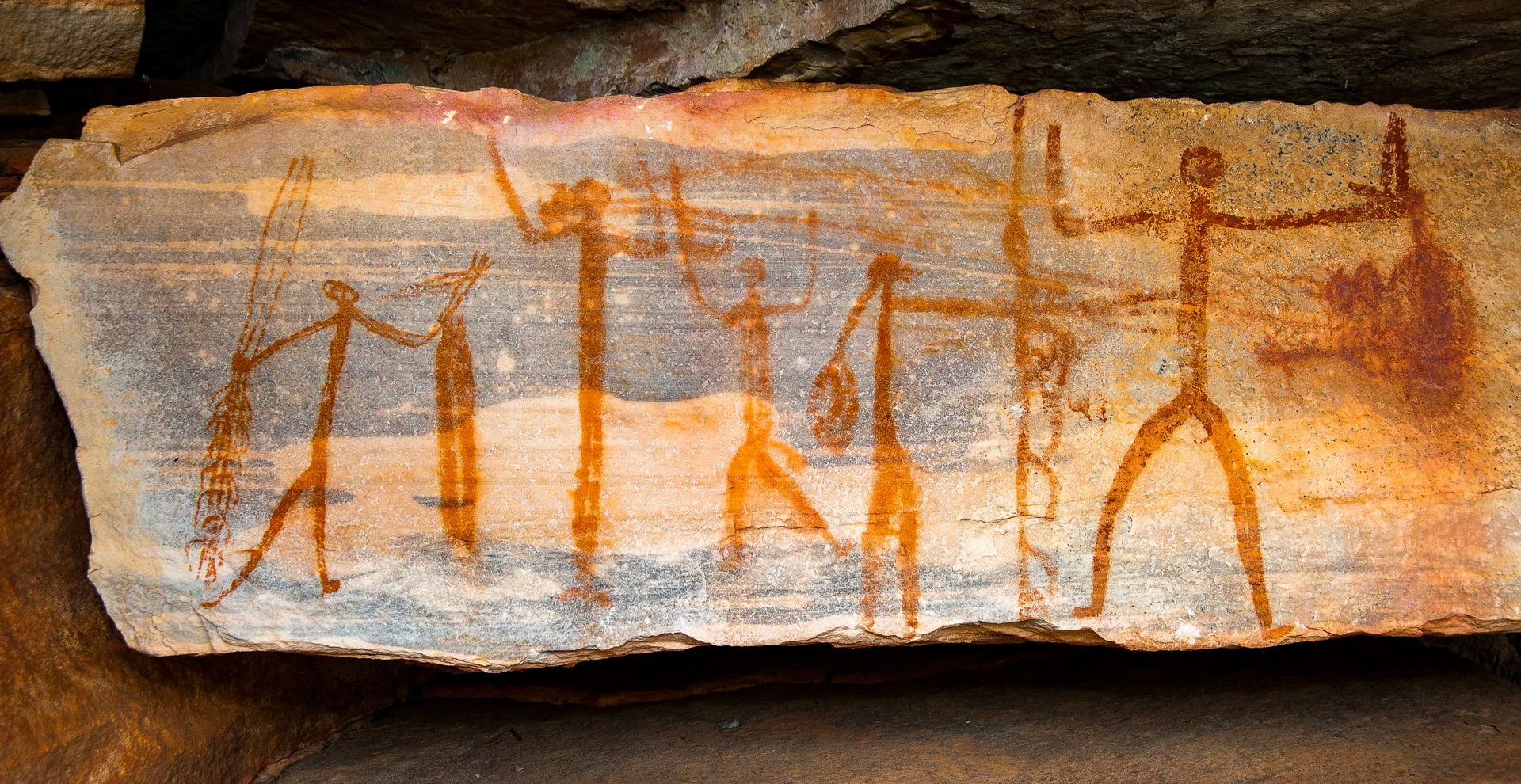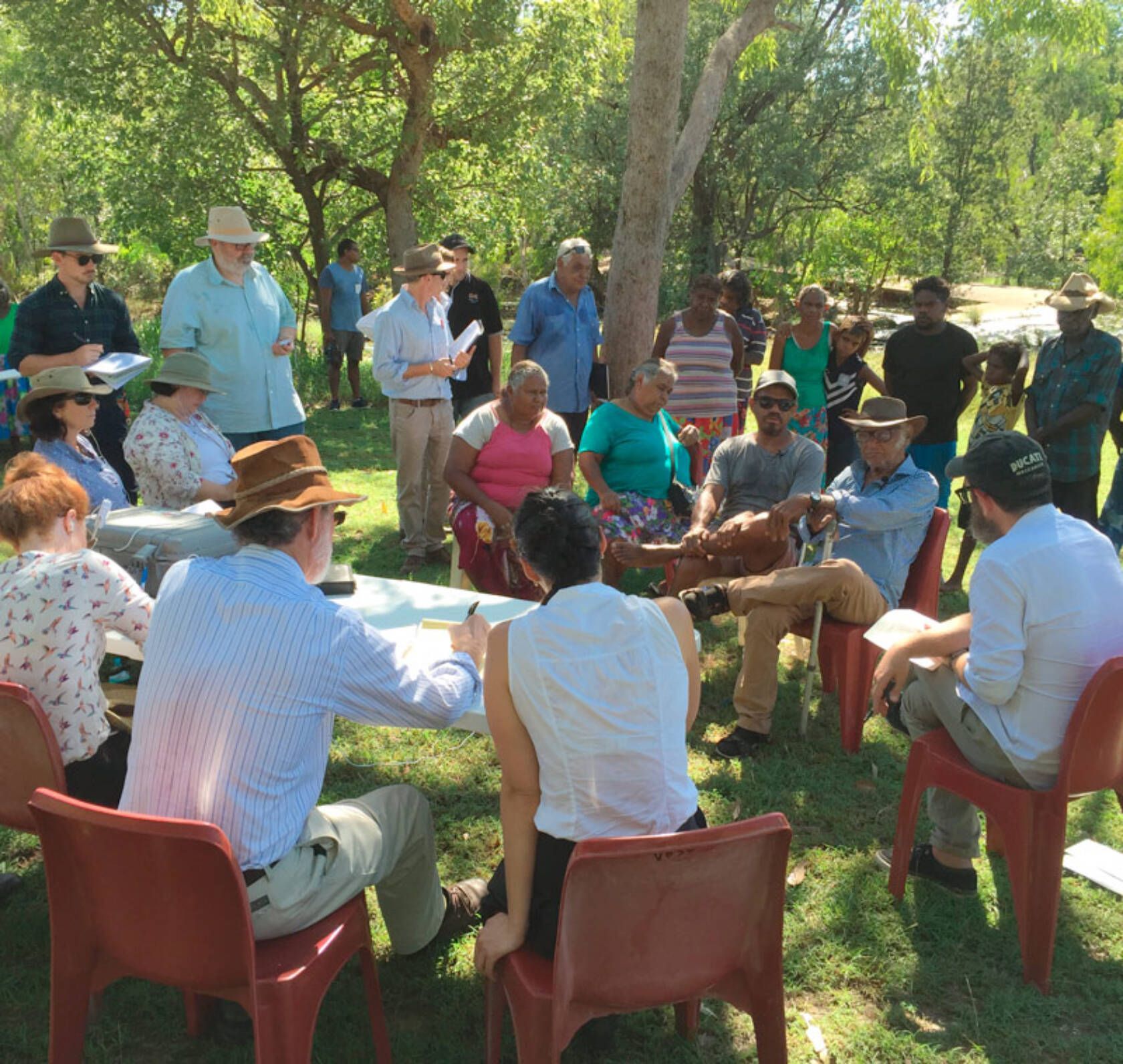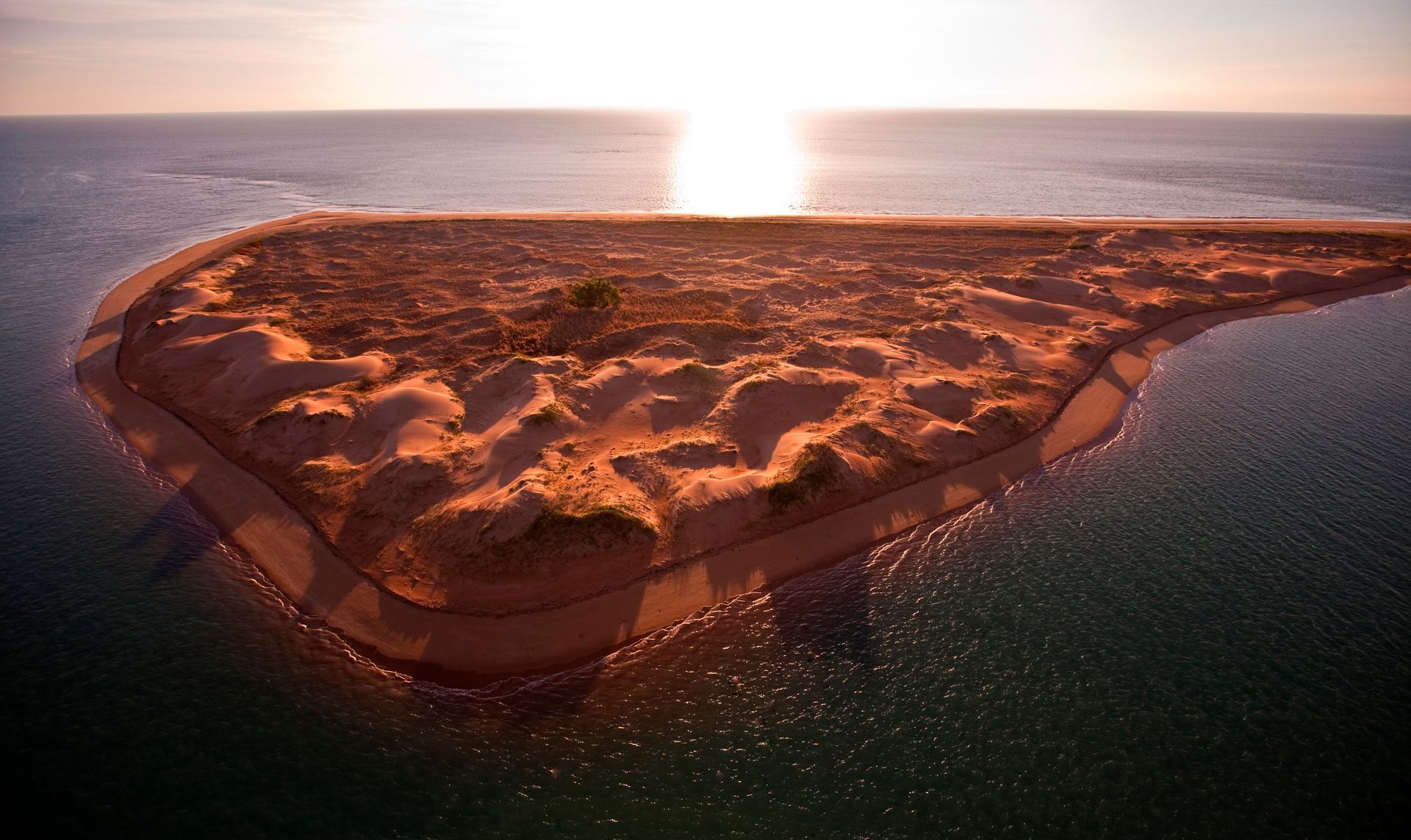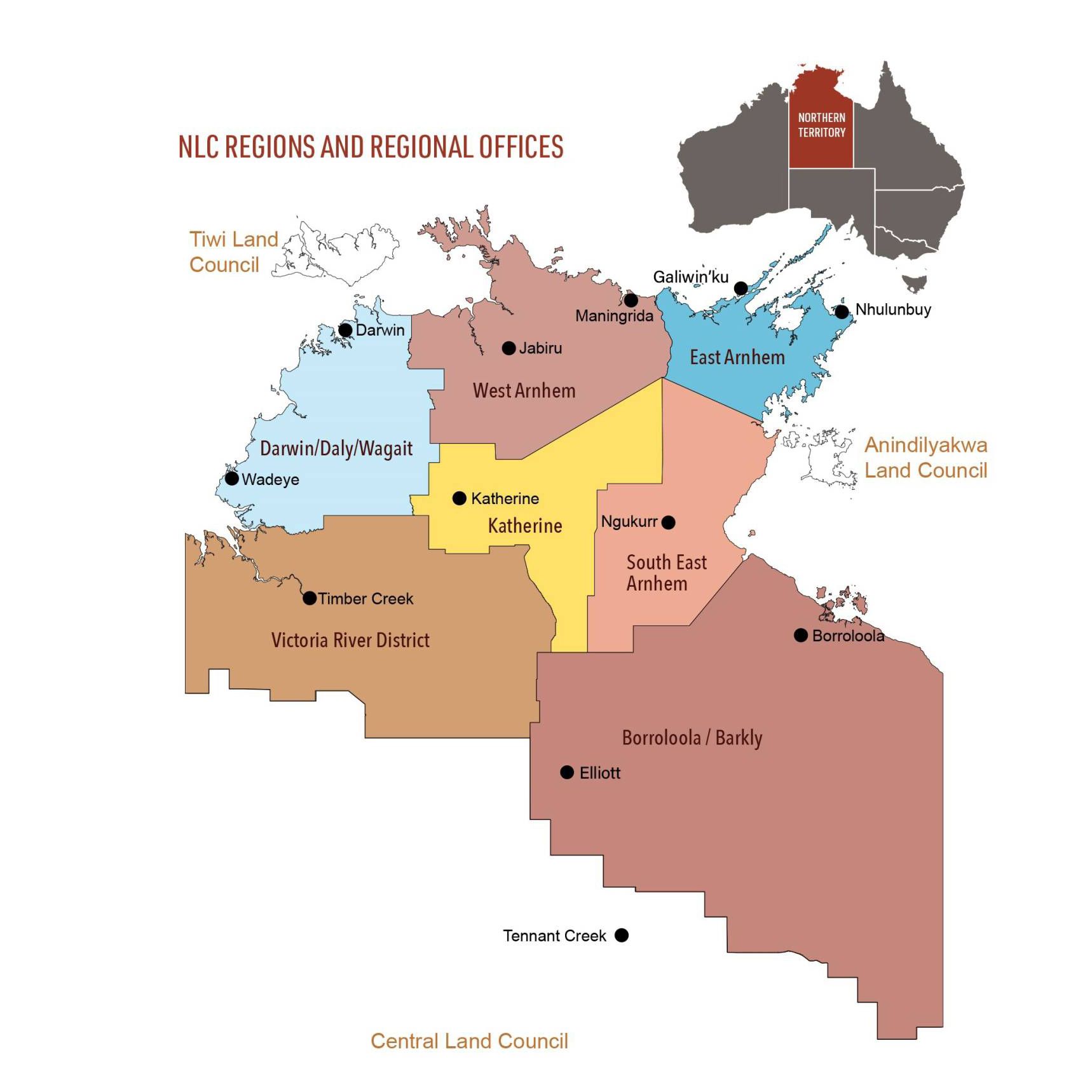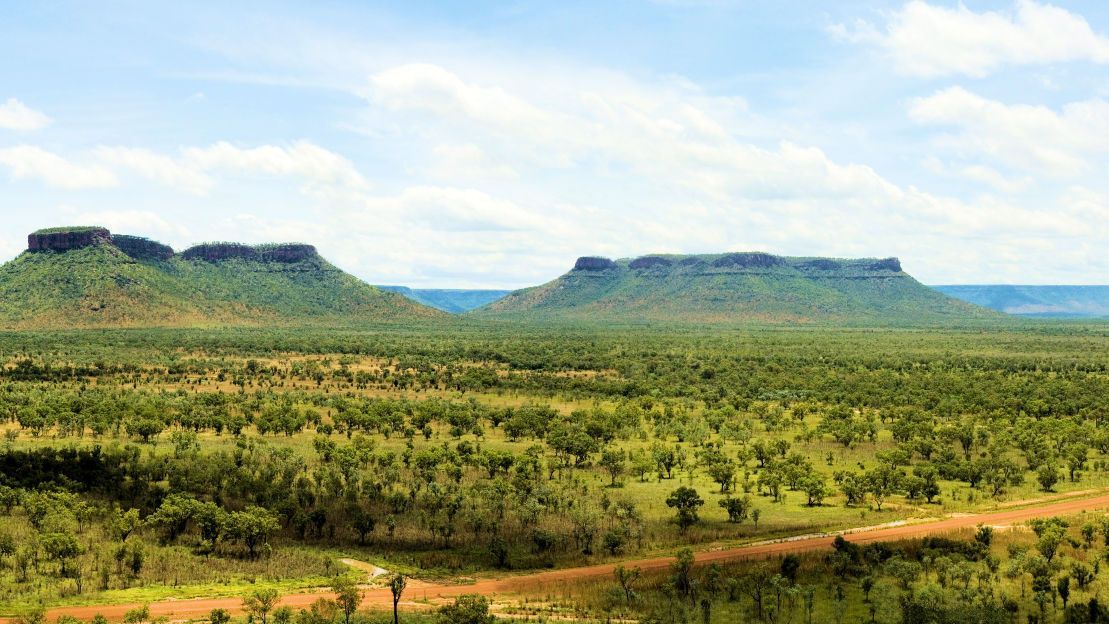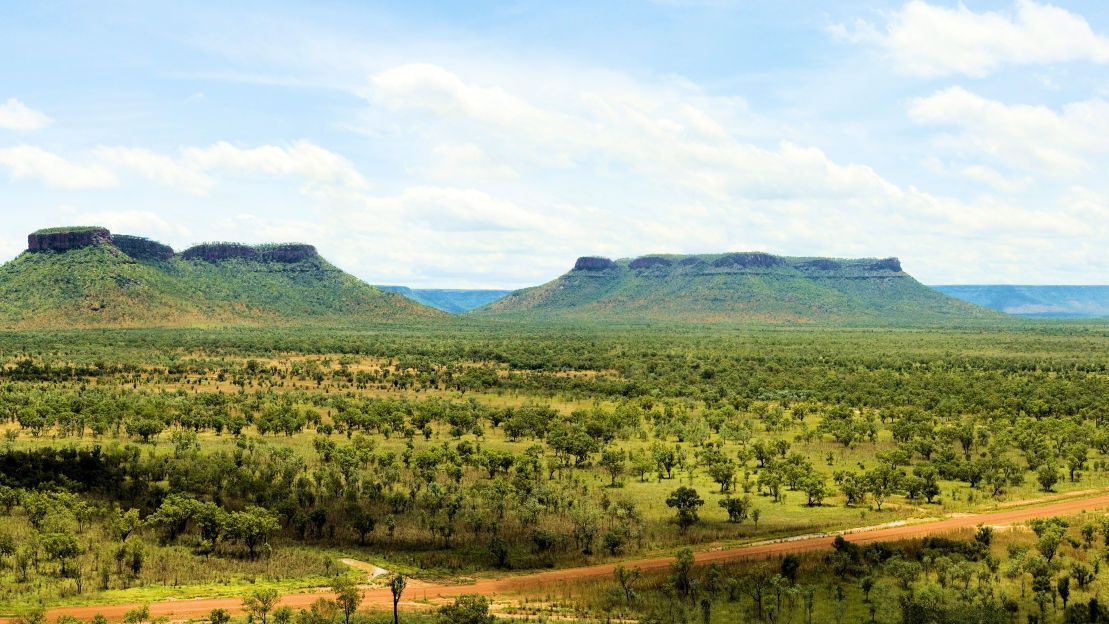About Us

The NLC is an independent statutory authority of the Commonwealth.
It is responsible for assisting Aboriginal peoples in the Top End of the Northern Territory to acquire and manage their traditional lands and seas.
Aboriginal land councils were set up in the early 1970s during the federal Government’s Aboriginal land Rights Commission (the Woodward Inquiry).
Land Councils are important bodies as they give Aboriginal peoples a voice on issues affecting their lands, seas and communities.
Key constituents of the NLC are Traditional Owners and the residents on Aboriginal lands. About 51,000 Aboriginal people live in the NLC region. The large majority of the NLC's constituents (some 75 per cent or 38,500 people) are residents in regional and remote locations.
The majority of Aboriginal people living within our region speak an Aboriginal language as their first language. Traditional Aboriginal law is practiced in many communities within our region.
Many major resource developments are taking place on Aboriginal land, land subject to Native Title rights and interests, or land and waters over which Aboriginal peoples assert interests. These developments include mining and exploration projects, the construction of railways, gas pipelines, army training areas, national parks, and pastoral activities. The challenge for the NLC is to ensure that social, economic and cultural benefits flow to Aboriginal people from these developments.
Aboriginal people are increasingly looking to participate in planning and development activities, while at the same time seeking to protect their culture and integrity.
The most important responsibility of the NLC is to consult with TraditionalOwners and other Aboriginal people with an interest in affected land. Traditional Owners must give informed consent before any action is taken to affect their lands and seas. Achieving informed consent also ensures affected Aboriginal communities and groups have the chance to express their views.
Our Logo
The NLC logo is derived from a painting by deceased Kunwinjku artist Curly Bardkadubbu from Marrkolidjban on the Liverpool River. He passed away in 1987. The painting is a western Kunwinjku depiction of the Rainbow Serpent, which is widespread in Aboriginal beliefs.
Our land and people
The NLC constituency has about 51,000 Aboriginal residents, 75 per cent of them living in regional and remote areas in about 200 communities ranging in size from small family outstations to communities with populations of about 3,000.
The majority of these people speak an Aboriginal language as their first language. Many are multi-lingual, and English is often a secondary language. Customary law constitutes the primary rules by which people continue to conduct their lives.
Traditional land and sea ownership is based on customary law, passed from generation to generation. This sacred trust involves defined groups or people, their ancestors and descendants.
In many areas, a system of 'managers' and 'owners' operates. Land managers generally have maternal links to land while landowners generally have paternal links to land. Aboriginal landowners and managers have specific and complementary rights and obligations to ensure the spiritual and physical health of defined areas of land.
Aboriginal land is private property owned under special freehold title. It is inalienable – in other words, it cannot be bought, acquired or forfeited.
The Aboriginal Land Rights Act (Northern Territory) 1976 (Cth) has enabled Aboriginal peoples to gain inalienable freehold title to 50 per cent of the NT and, through the High Court's 2008 Blue Mud Bay decision, about 85 per cent of the NT coastline.
For the most part,Traditional Owners with inalienable Aboriginal freehold have the exclusive power to control the direction and pace of development on their lands. The public, in the form of government at various levels, has only limited rights to impose external development or conservation direction or constraints.
Aboriginal land is not owned by individuals. It is granted as a communal title. Land is formally held by land trusts - groups of Aboriginal people who hold the title for the benefit of all the Traditional Owners and Aboriginal people with an interest in the land.
Under the Land Rights Act, decisions over the use of Aboriginal land must have the consent of the Traditional Owners as a group and ratified by the Land Council. Aboriginal land in the NLC region is held as inalienable Aboriginal freehold – the strongest form of title in Australia.
The nature of Aboriginal inalienable tenure differs from mainstream definition of private land inasmuch as such land cannot be bought or sold. It can however be leased from the Aboriginal Land Trusts (which hold title) to Aboriginal corporations or to non-Aboriginal interests with the informed consent of Traditional Owners.
Our History
Since they were first established, Aboriginal land councils have won back almost half of the land mass of the Northern Territory and 85 percent of the coastline of traditional Aboriginal landowners. Significant areas of Aboriginal land have been opened up for development through agreements with Aboriginal peoples.
Scientific evidence dates Aboriginal presence in northern Australia to 60,000 years and southern Australia to 40,000 years. European settlement of the Australian continent began in 1788 when a British penal settlement was founded at Sydney Cove.
Colonisation spread across the continent and its islands. Aboriginal and Torres Strait Islander nations resisted the occupation of their lands by pastoralists and the destruction of their way of life.
Following unsuccessful attempts to establish settlements in northern Australia, colonial officials, pastoralists, prospectors and missionaries began to arrive in what is now the Northern Territory in the latter part of the 19th Century.
Traditional hunting grounds and fertile lands were taken by pastoralists. Many groups were left to live on unproductive land. Despite receiving unjust compensation for their labour, many worked on cattle stations and were able to maintain their historic cultural links to their land.
In the 1960s the land rights movement began to gain momentum. In 1973 the Woodward Commission of Inquiry into the appropriate way to recognise Aboriginal land rights in the Northern Territory was announced. The Northern and Central Land Councils were formed in the same year to assist with the work of the Commission.
“I have ... felt very strongly the lack of any cohesive organisation linking these various people to whom I have spoken. There is no body or council which can speak for the Aborigines of the Territory as a whole. ... They have no means by which they can formulate a generally supported claim or make their voices heard in a way likely to influence ultimate decisions.”
— Justice Woodward
The Land Rights Act was intended to be a model for national land rights legislation. Opposition from State Governments and the mining industry, however, defeated this objective.
Since the introduction of Aboriginal Land Rights Act (Northern Territory) in 1976 (Cth) the Act has been the subject of continual attacks and attempts to reduce the rights that Aboriginal people had reclaimed to manage their land.
Previous Northern Territory Governments’ policy of extensive legal challenges to land claims has continued over the life of the Land Rights Act. Such challenges have ignored the obvious strength of claimants’ cases, the efficacy of the Land Councils’ approach and the failure of nearly all of the government challenges.
Whilst wasting millions of taxpayer dollars, this policy has delayed the outcomes of land claims and delayed or denied Aboriginal people their rights to reclaimed land. Many claimants have died before their claims have been successfully resolved.
Despite the challenges, Land Councils have won back almost half of the land mass of the Northern Territory and 85 percent of the coastline of Traditional Owners. Significant areas of Aboriginal land have been opened up for development through agreements with Aboriginal peoples.
Traditional Owners continue to rely on the natural environment for spiritual, social and economic well-being. Governments are increasingly recognising the critical role that Traditional Owners have in caring for the land, waters, seas and flora and fauna in the Northern Territory.
As the ability of Aboriginal peoples to succeed in further land claims diminishes, the role of Land Councils is shifting to focus more on land management and development.
TIMELINE
Our Role
The most important responsibility of the NLC is to consult with traditional landowners and other Aboriginal peoples with an interest in affected land. Traditional Owners must give informed consent before any action is taken to affect their lands and seas.
The Northern Land Council’s statutory obligations under Aboriginal Land Rights (Northern Territory) Act 1976 (Cth) include:
- To ascertain and express the wishes of Aboriginal peoples about the management of their land and legislation about their land.
- To protect the interests of Traditional Owners of, and other Aboriginal people interested in, Aboriginal land.
- To assist Aboriginal peoples to protect sacred sites, whether or not they are on Aboriginal land.
- To consult Traditional Owners and other Aboriginal peoples interested in Aboriginal land and land under claim.
- To negotiate on behalf of Traditional Owners with peoples interested in using Aboriginal land or land under claim.
- To assist Aboriginal peoples to carry out commercial activities.
- To assist Aboriginal peoples claiming land and, in particular, arrange and pay for assistance for them.
- To keep a register of Land Council members and members of Aboriginal Land Trusts and description s of Aboriginal land.
- To supervise and assist Aboriginal Land Trusts.
- Attempt to conciliate disputes between Aboriginal peoples regarding land matters.
- Hold in trust and distribute to Aboriginal associations statutory payments from the Aboriginals Benefits Account to communities affected by mining operations and income received on behalf of landowners under negotiated agreements.
- Process applications for permits to enter Aboriginal land.
- Any other functions as prescribed.
The NLC is also the Native Title Representative Body for the northern region – including the Tiwi Islands and Groote Eylandt. This includes land that does not fall under the Lands Right Act, such as crown land or other lands in towns, national parks, and land vested in the Northern Territory Land Corporation, pastoral leases and offshore areas.
Functions prescribed under the Native Title Act 1993 (Cth) include:
- To facilitate the researching, preparation and making of applications, by individuals or groups for determinations of Native Title or for compensation for acts affecting Native Title.
- To assist in the resolution of disagreements among such individuals or groups about the making of such applications.
- To assist such individuals or groups by representing them, if requested to do so, in negotiations and proceeding relating to:
- the doing of acts affecting Native Title;
- the provision of compensation in relation to such acts;
- Indigenous Land Use Agreements or other agreements in relation to Native Title rights of access conferred under the Act or other acts; and
- any other matter relevant to the operation of the Act.
- To certify in writing applications for determinations of Native Title and applications for registration of Indigenous Land Use Agreements relating to areas of land wholly or partly within the region of the representative body.
- To become a party to Indigenous Land Use Agreements after consultation with the Native Title holders of the land or waters subject to the agreement.
The NLC is also authorised to perform functions under Northern Territory law, including:
- Aboriginal Land Act 1978
- Cobourg Peninsular Aboriginal Land, Sanctuary and Marine Act
- Lands and Mining Tribunal Act 1981
- Nitmiluk (Katherine Gorge) National Park Act 1989
- Northern Territory Aboriginal Sacred Sites Act 1989
- Pastoral Land Act 1992
- Special Purpose Leases Act 1953
- Territory Parks and Wildlife Conservation
Act 1976
The NLC provides services in the following areas:
- Land, sea and natural resource management
- Land claims and land acquisitions
- Economic development and commercial services
- Advocacy
- Administration and support services
- Native Title services
The NLC has a long-term policy of supporting regional decision making. To this end, significant resources are directed each year towards maintaining fully-staffed and resourced regional offices. The NLC has regional offices in the seven administrative regions.
NLC ORganisational Structure
The NLC’s operations are managed by four divisions:
Land & Law
Land & Sea Management
Corporate Services
Regional Development
Our governing laws
The NLC remains the paramount body through which the Aboriginal people of the Top End make their voices heard on issues which impact upon their land, seas and communities. ALRA continues to be the strongest foundation on which to build social, cultural and economic growth for Traditional Owners.
The NLC is a body corporate established under the Aboriginal Land Rights Act and a Native Title Representative Body recognised under the Native Title Act 1993.
The NLC Full Council at the 124th Full Council Meeting at Godinymayin Yijard Rivers Arts and Culture Centre in Katherine, December 2022. (Updated Image of 2025 - 28 NLC Full Council to Come )
Our Council
The NLC's Full Council is the major decision-making body of the organisation.
The NLC’s Full Council will consist of 111 elected members, plus five co-opted women, making a total of 116 members. Nominations for the Full Council are held every three years. Full Council meetings are held twice each year, when Councillors determine policies and directions, approve land use agreements and mining and exploration tenements for which Traditional Owners have given their consent.
The NLC Chair, Deputy Chair and Executive members representing each of the NLC’s seven regions are elected at the first meeting of the new Full Council.
The roles and powers of the Full Council, Executive Council and Regional Councils are separate from the Chief Executive Officer and NLC staff. The Full Council is responsible for setting the strategic direction of the NLC with advice from the CEO. It can delegate its powers to the Executive and Regional Councils. The CEO is responsible for managing the NLC’s regular operations, implementing Full Council decisions and reporting back to the Full Council.
In accordance with the land rights act Aboriginal peoples living in the NLC region can request to inspect the NLC’s meeting rules and minutes of NLC Full, Executive and Regional Council meetings. To arrange an inspection contact councilservices@nlc.org.au
The NLC’s constituency is a representation of the Traditional Owners within its jurisdiction. There are seven regions within the NLC’s jurisdiction:Borroloola/Barkly; Darwin/Daly/Wagait; East Arnhem; Katherine; South East Arnhem; Victoria River District (VRD) and West Arnhem.
17th Full Council of the NLC 2025-28
Executive Council 2025-228
Five Co-Opted Women
The NLC Chair appoints up to five co-opted women to the full council in order to boost women's representation.
Northern Territory Aboriginal Investment Committee
The Full Council of the NLC nominates two members to sit on the board of the Northern Territory Aboriginal Investment Committee (NTAIC) and the NTAIC Grants Committee. The following members were nominated during the 124th Full Council Meeting.
Aboriginal Sea Company
The Full Council of the NLC nominates three members to the board of the Aboriginal Sea Company. The following members were nominated to the Aboriginal Sea Company during the 124th Full Council Meeting:
Council Nominations
The Northern Land Council elects members using a method of choice which sets out the means by which Aboriginal people within our region are nominated to become members of the Full Council. Per the Aboriginal Land Rights (Northern Territory) Act 1976 (Cth), the Minister holds the delegation to approve the method of choice.
The current method of choice was approved by the Minister on 19 August 2025. The new method of choice addresses the recommendations of the Australian National Audit Office (ANAO) 2023 NLC Report.
Members are nominated by a recognised entity, or where there is no recognised entity, by a community meeting.
Recognised entities are listed here. Section 6 of the method of choice describes the process to amend the recognised entity for an area.
You can find the nomination allocation by ward here and a map of all wards here.
If you do not agree with the nominations process for your ward and would like to file a petition, you can download the form here.
Council nominations 2025-28
Nominations for the 2025–28 Full Council term have now closed.
For more information about the method of choice and the council nominations 2025-28 process please contact the NLC on 1800 645 299 or
nominations@nlc.org.au.
To download the 2025 Method of Choice and more information about the council nomination process, click below.
NLC CHAIR
Mr Matthew Ryan (Mar 2024 - Nov 2025)
At the 126th NLC Full Council Meeting on March 11th, 2024, Matthew Ryan garnered the support of his fellow councillors from across the NLC’s seven regions to be elected as the ninth NLC Chairperson. He was voted in for a second term at the 130th Full Council Meeting on December 9th 2025.
Of Barabarra, Wurrpann, and Gurindiji descent, Mr Ryan resides in Maningrida. He was first elected to the NLC in 2004 and had been serving a second non-consecutive term as a NLC Executive Council member (West Arnhem region) since 2022.
Through the Council and his various community leadership roles Mr Ryan has called for improvements to education, telecommunications, and health services. A staunch advocate for constitutional recognition, he has also consistently campaigned for greater electoral participation.
Mr Ryan previously worked as an Aboriginal Community Police Officer in the Northern Territory Police Force and as a Djelk Community Ranger with Bawinanga Aboriginal Corporation (BAC). He was elected to the board of BAC before serving as Chairperson for two terms. He is a long-serving councillor for the West Arnhem Regional Council and is currently serving his second term as Council Mayor. He also holds positions on the boards of the BAC, Homelands School Company, and Aboriginal Housing NT.
Mr Ryan will lead the NLC as Chair until December 2028, when Aboriginal communities from across the Top End will once again appoint representatives to the Council.
NLC CHIEF EXECUTIVE OFFICER
Mr Yuseph Deen
Yuseph Deen was appointed to the position of CEO effective December 9, 2024.
As a descendant of the Wuthathi peoples with connections to the Gunggandji and Torres Strait Islands, he brings extensive insight to the NLC, as well as experience in local government and Aboriginal governance.
Deen will focus on implementing the strategic objectives of the NLC, ensuring that Aboriginal people can acquire and manage their lands to their greatest benefit. He aims to foster an environment where the voices of our constituents are heard and their rights are upheld.
He joins the NLC following his tenure as CEO of the NSW Aboriginal Land Council (NSWALC), as well as work with the North Queensland Land Council, the Indigenous Land Corporation, Lumbu Indigenous Community Foundation and the Western Cape Communities Trust.
You can read more on his appointment here..

